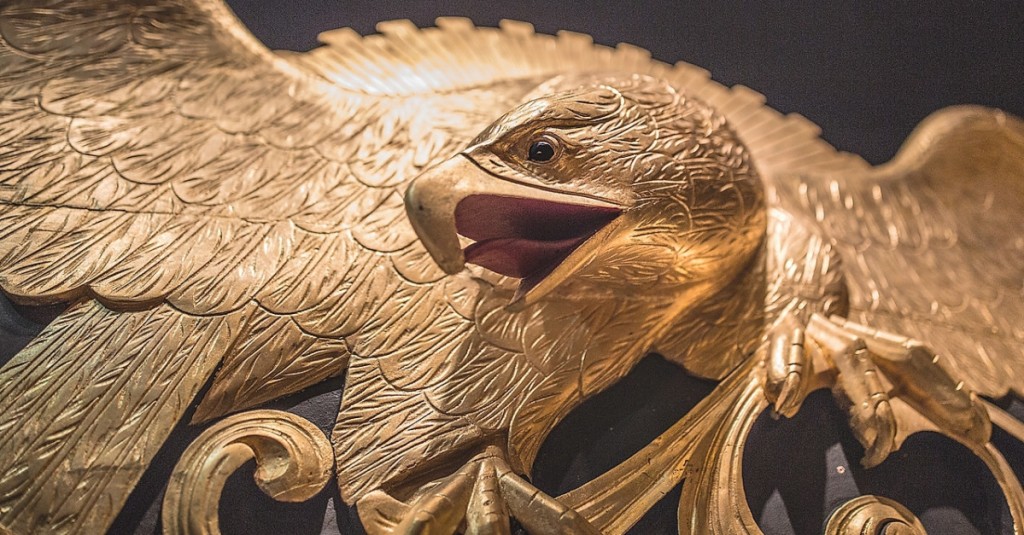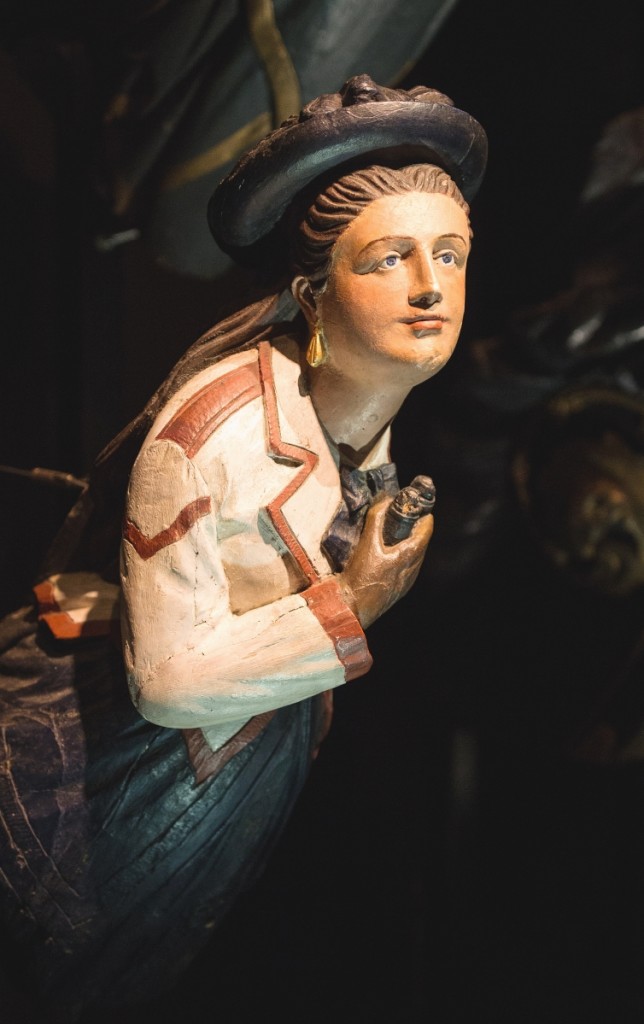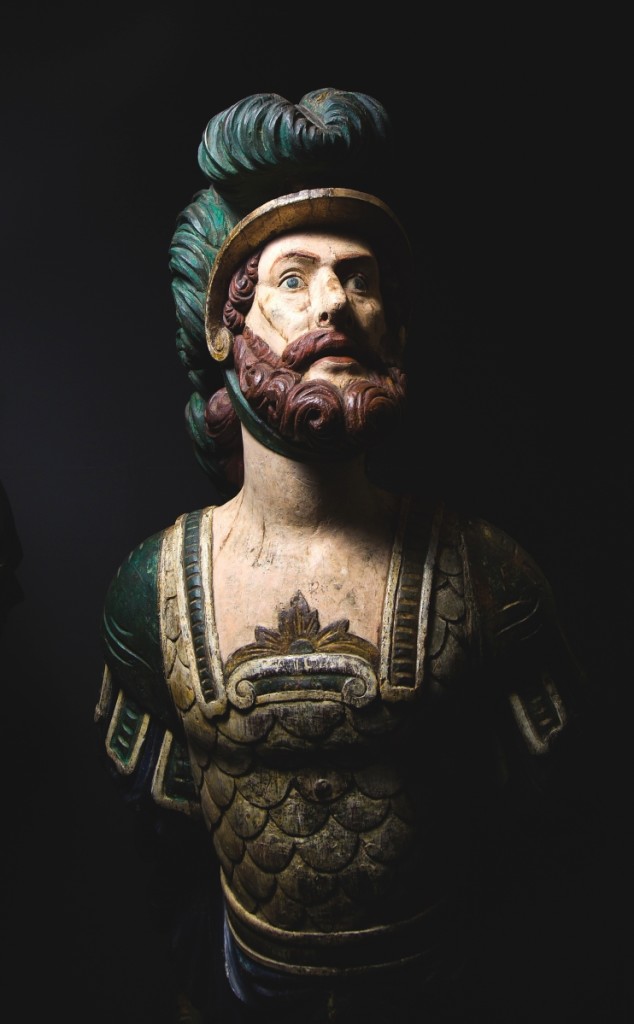MYSTIC, CONN. – After more than 40 years, the “Figureheads & Shipcarvings” exhibit at the Mystic Seaport Museum has been redesigned and reinstalled in a dramatic presentation that not only reimagines the exhibit, but changes the story by placing the artifacts in the context of woodcarving artistry of the Nineteenth Century.
Since ancient times and across cultures, decorations have adorned the bows of boats and ships, from the Nile and the Mediterranean to the far North Atlantic and Pacific Oceans. Dutch and English ships of the Sixteenth Century were the first to sport figureheads like the ones we know today. Lions and unicorns were particular favorites of the English navy, and Dutch naval ships featured red lions. Spanish ships mounted figureheads depicting saints, no doubt to ensure blessings and safe passage. By the Eighteenth Century, European shipcarvers crafted figureheads that depicted a wide array of subjects, human and animal. The decline of figureheads came with the advent of steam power in the late Nineteenth Century, which influenced changes in the design of oceangoing ships. Since steam-powered ships no longer required rigging for sails, ships’ bows no longer provided a natural place for a figurehead to be mounted.
Ship’s figureheads were an important form of public art in the Nineteenth Century. A figurehead gave a ship its personality, and each one expressed a unique meaning, imbued with values and reflecting popular culture of the time. The reinterpretation aims to help visitors see these objects through Nineteenth Century eyes, and to understand and appreciate the craft of carving and figureheads as an important art form.
In most cases, the name of the original vessel for a particular figurehead has been lost. Instead, they are known by internal titles such as “Woman with Flowers,” or “Bespoke Gentleman.” For the new installation, curators researched the clothing, hairstyles and poses, finding theatrical antecedents for many, such as the “Woman with Beads,” whose costume, long hair and rosary beads suggest she represents the French martyr Joan of Arc as she was portrayed on the Victorian stage. Images from fashion plates, photos and maps accompany each figurehead to provide context and insight. The curators also analyzed the figures, carved by English and American carvers, who depict different cultures: Native American, Southeast Asian and Middle Eastern.
The museum has collected figureheads from its very beginning in 1929. The current exhibit displays 16 figureheads. Because of space limitations, an additional 45 figureheads and dozens of other maritime carvings remain in the museum’s vaults.
The new installation changed the mix of figureheads on display. Several were returned to collections storage and replaced by figureheads that have not been seen publicly for many years. A key change to the exhibit’s design is to present the figureheads at an angle approximating their mount on the ship, so the audience gets a more accurate sense of how they appeared when in use (The former exhibit had them mounted vertically). Also, the bow and bowsprit of the 1908 steam yacht Iolanda with its figurehead is replicated to provide realistic scale.
The new exhibit further showcases the depth and breadth of the museum’s carving collections. In addition to figureheads, it features other Nineteenth Century ship carvings, shop figures and our latest acquisition, a magnificent carousel hippocampus. A section is devoted to the craft of woodcarving with a ship’s billethead – an alternative to a figurehead – displayed in a partial stage of completion to illustrate the techniques and process to complete a carving.
The exhibit was co-curated by Katherine Hijar and Mirelle Leucke. The exhibit was funded by a grant from the Henry Luce Foundation.
Mystic Seaport Museum is at 75 Greenmanville Avenue. For further information, www.mysticseaport.org or 860-572-0711.
















